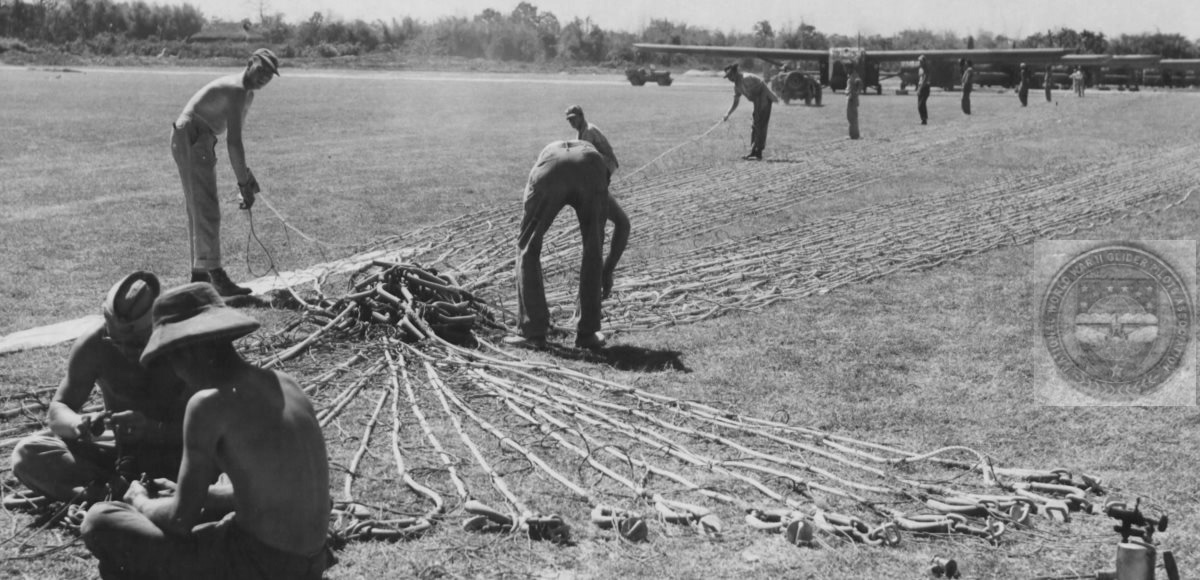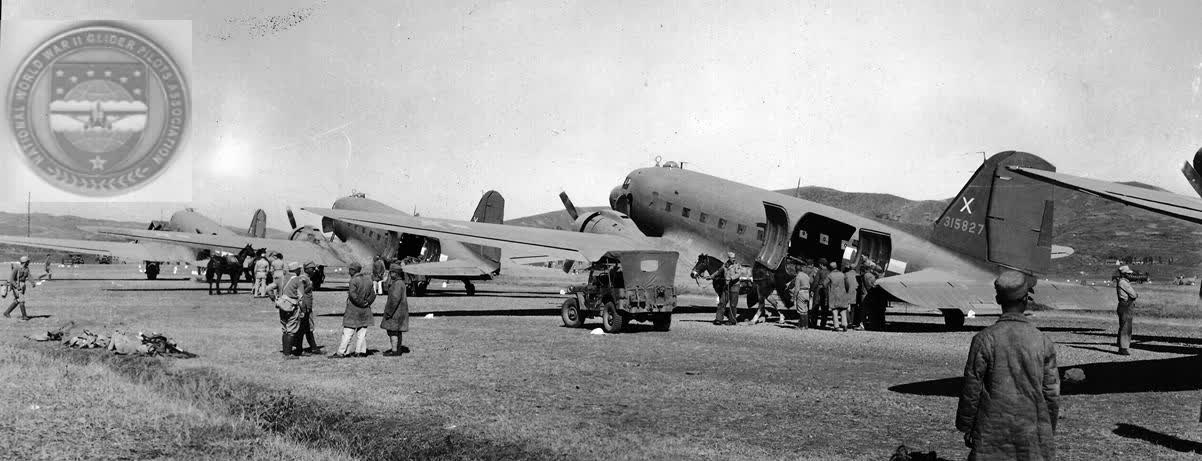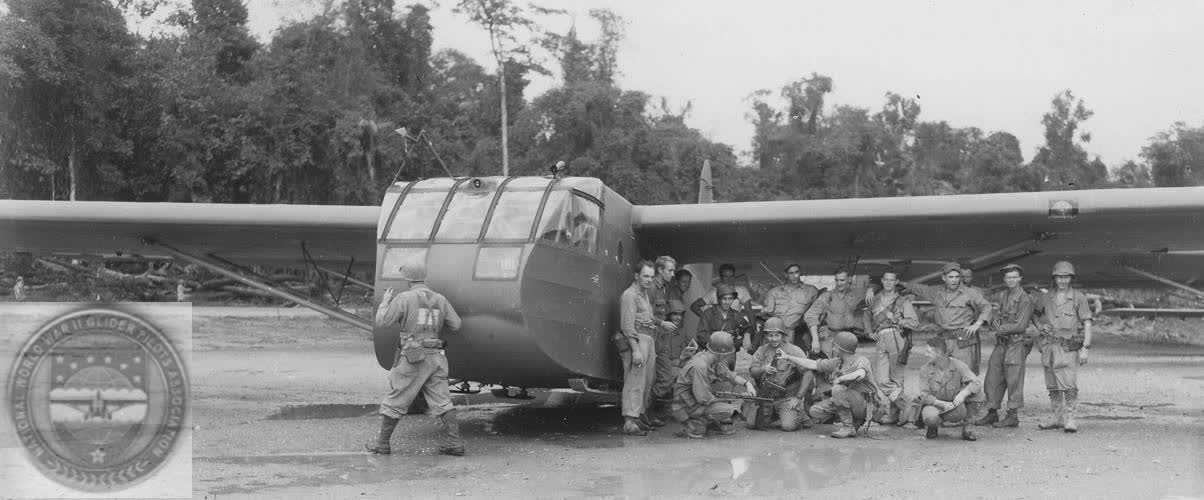National WWII Glider Pilots AssociationLegacy Organization of veterans National WWII Glider Pilots Association. Discover our History, Preserve our Legacy | ||
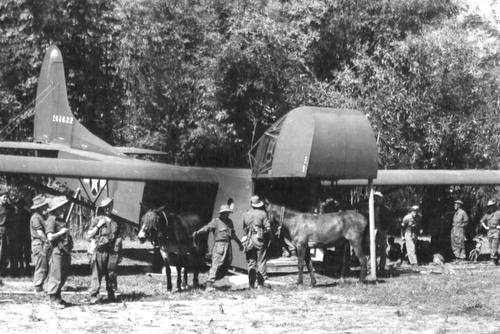
Gerard M. DevlinSilent Wings: The Saga of the U.S. Army and Marine Combat Glider Pilots During World War II pg 140/141 During their earlier excursion into Burma, Wingate’s Chindits had used mules to carry ammunition and supplies.
All of the pack animals taken in on that first mission had been requisitioned from Indian army artillery units. For the upcoming operations, larger and stronger mules had been
imported from Argentina, South Africa and the United States. The newly arrived mules, averaging some 700 pounds in weight, had had their larynex surgically removed so that they
would be unable to give away their position while behind Japanese lines. At General Wingate’s request, a CG-4A glider was rigged to carry three mules on a test flight.
British soldiers built three padded stalls in the test glider and then, to everyone’s surprise, were ab le to lead the animals aboard without a struggle. The glider pilot
brought along a mechanic armed with an M-1 rifle. Just before take-off he instructed the mechanic: ‘If any one of those critters starts raising hell up in the sky you shoot
him right between the eyes before he kicks our glider apart.’ As a sidenote: Operation Thursday ran for six days and six nights. During that time, 9,052 troops, 175 horses, 1,283 mules, and half a million pounds of supplies were flown in by Troop Carrier Command, the RAF, and the 5318th (renamed the 1st Air Commando Group by General Henry H. "Hap" Arnold). ... The gliders made 74 mission in all. |
BURMA
Awards THURSDAY
Awards CHOWRINGHEE
Locating F/O Robert Hall
Burma Compalation of Info.
The Beginning of Special Operations
Flight Officer Shimulunas
First Published in Briefing 2020
Locating FO Robert Charles Hall
First Published in Briefing 2021
Flight Officer John (Jackie) L. Coogan
First Published in Briefing 2022
Glider Retrieval by Jungle Moonlight
Mules in Gliders
Randal Baily interviews Glider Pilot Tim Baily about Liberating Prisoners of Pergu, Burma “Jungle Rescue” glider snatch.
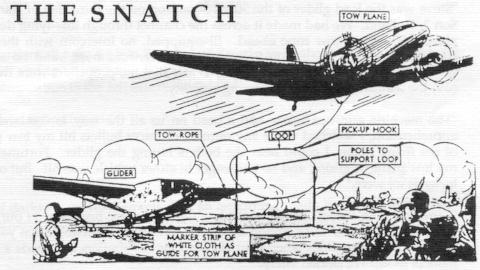
Used effectively in Burma! After unloading equipment loaded up with stretcher and walking wounded and then snatched out. Returned to Hospital in about 2 hours as opposed to two months by ambulance.
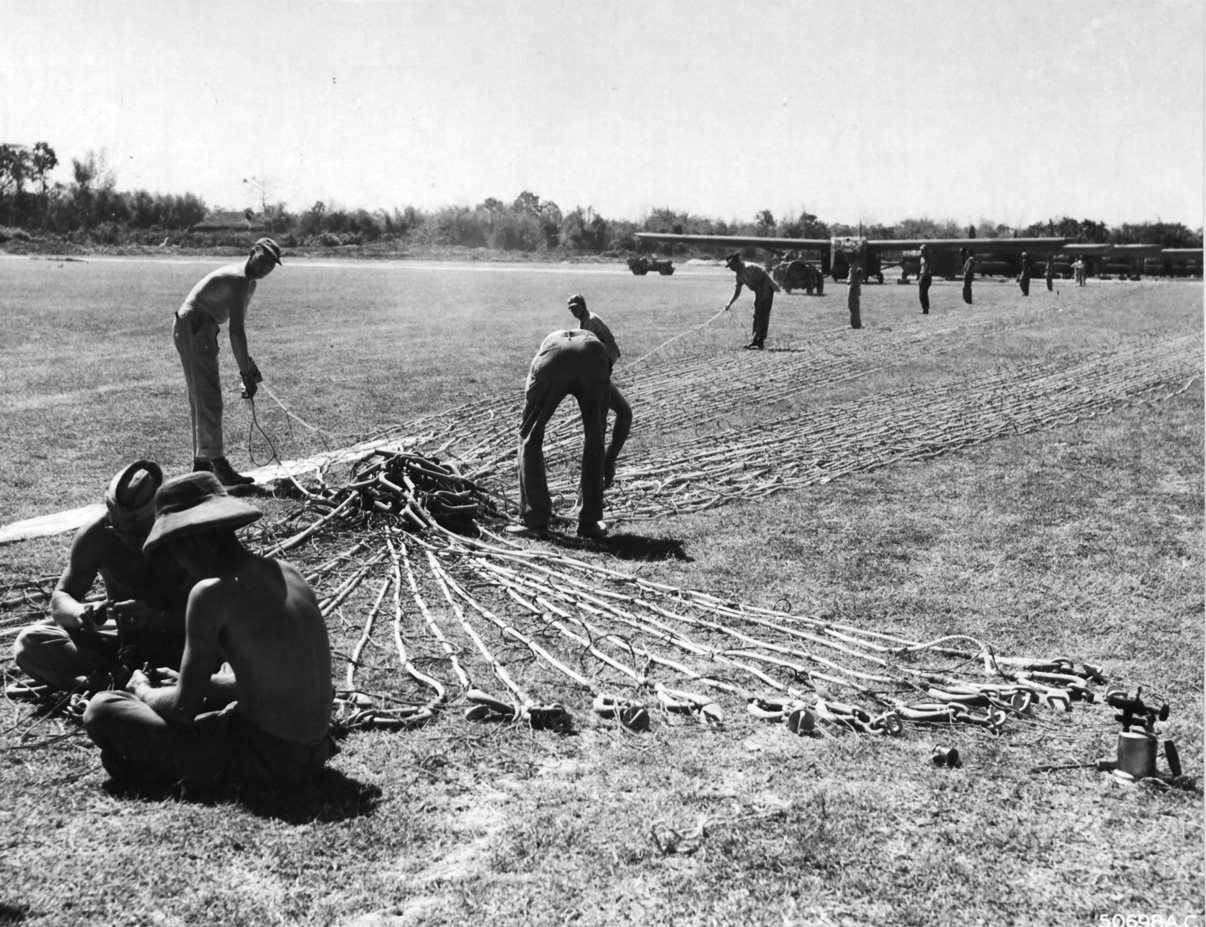
Setting out the tow ropes to hook up the gliders.





